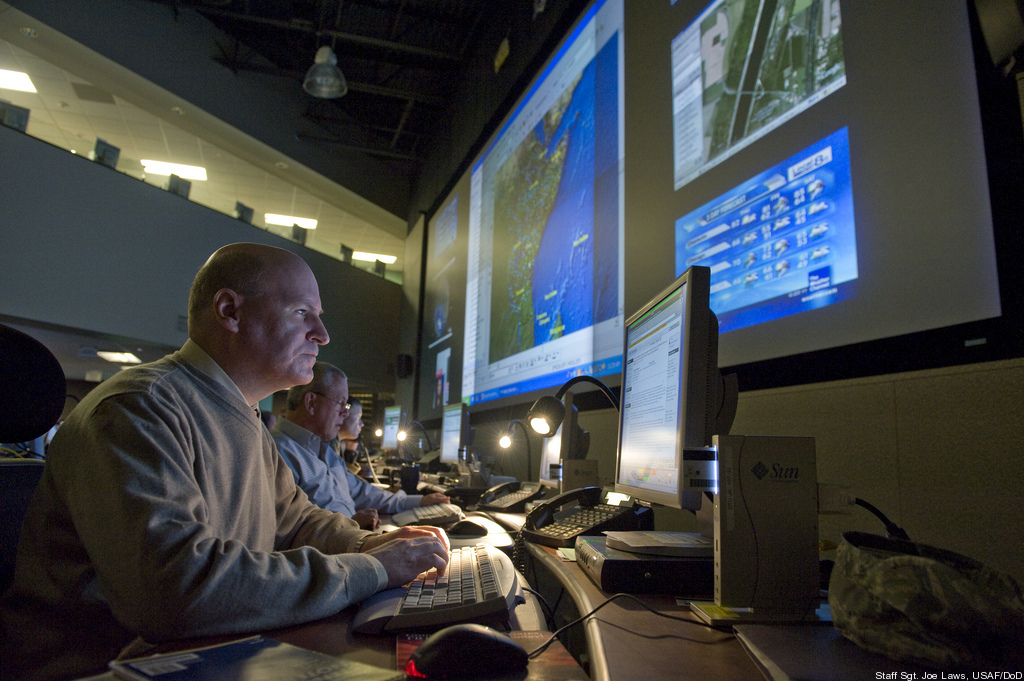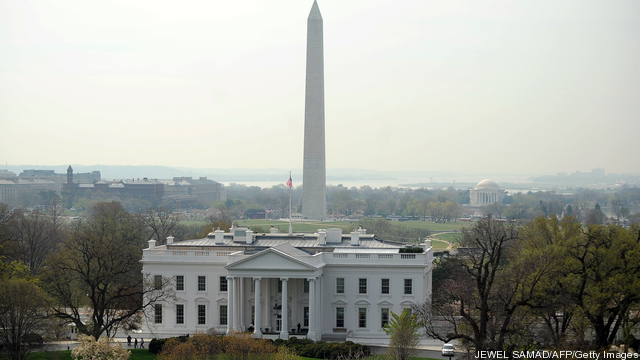Digital Intelligence Systems, LLC (DISYS) has launched its first external component of ‘Accelerating Productivity,’ an initiative centered around driving greater value, expertise and services through optimization and exceptional service. ‘Accelerating Productivity’ consists of leveraging key expertise to deliver tangible, innovative solutions to address a client’s most urgent business needs. To accomplish this, the company focuses… Keep reading →
nanotechnology
Digital Intelligence Systems, LLC (DISYS) Launches ‘Accelerate Productivity’ To Deliver Top Value And Efficiency To Key Vertical Markets
By businesswireArizona SciTech Convenes In Washington D.C. With STEM Ecosystem Leaders; Meeting With White House Officials
By businesswireLast Thursday in Washington, D.C., leaders from Arizona SciTech, a group anchored at both the Arizona Commerce Authority and the Arizona Technology Council Foundation in collaboration with the Arizona Board of Regents, the Arizona Science Center, Arizona State University and the University of Arizona, met with the leaders of 26 other regional networks from across the U.S…. Keep reading →
2016 Public Policy Guide From The Arizona Technology Council Provides Blueprint For Technology Industry Growth
By businesswireThe Arizona Technology Council and its Public Policy Committee today announced the publication of its “2016 Public Policy Guide.” The positions and principles featured in the document aid elected officials at all levels of government in crafting policies that support growth in Arizona’s new and existing technology companies. To view and download the complete document… Keep reading →
Global Solar Photovoltaics Plus Energy Storage Nanogrid Revenue is Expected to Reach $23.1 Billion in 2024, According to Navigant Research
By businesswireA new report from Navigant Research examines the global market for solar photovoltaics (PV) plus energy storage nanogrids, including an analysis of market issues, with forecasts for capacity and revenue, through 2024. During the last year, partnerships between solar PV companies and energy storage system (ESS) providers have increased rapidly, with their synergies giving way… Keep reading →
The Arizona Technology Council Names 2015 Outstanding Legislators And Tech Champions
By businesswireThe Arizona Technology Council announced today the Outstanding Tech Senator of the Year, Outstanding Tech Representative of the Year and legislator Tech Champions to be honored at the 2015 Governor’s Celebration of Innovation (GCOI) awards presented by Avnet, Inc. These awards, along with business and individual awards, will be presented Thursday, November 12, 2015, at… Keep reading →
Tech Transfer Industry Report Shows Steady Growth, Cites Importance of Federal Research Funding
By businesswireThe country’s leading organization of technology management officials reported today the results of its annual licensing survey, showing steady growth in the patenting and licensing of new technologies and a 16% increase in the number of new technology business enterprises in 2013. Meeting this week in Washington, the Board of Directors of the Association of… Keep reading →
NRL Demonstrates Capabilities of Coupled Oceanic and Atmospheric Prediction Tools at 2013 Navy Fleet Exercise
By businesswireU.S. Naval Research Laboratory (NRL) scientists at the Monterey Marine Meteorology Division and the Stennis Space Center Oceanography Division, working with other Navy and academic institutes, took part In the Navy fleet experiment TRIDENT WARRIOR 2013 (TW13), July 13-18, demonstrating in-situ atmospheric and oceanic sensing systems and real-time operational mesoscale numerical weather prediction models. “These… Keep reading →
 Government agencies are flooded with a tidal wave of data. But a number of healthcare agencies are facing particularly challenging obstacles to achieving their missions in a digital and data interoperable world. This is particularly true for regulatory healthcare agencies such as the Food and Drug Administration (FDA).
Government agencies are flooded with a tidal wave of data. But a number of healthcare agencies are facing particularly challenging obstacles to achieving their missions in a digital and data interoperable world. This is particularly true for regulatory healthcare agencies such as the Food and Drug Administration (FDA).
As outlined in the agency’s “FDA Science and Mission at Risk” report dating back to 2007, the FDA anticipated many of these challenges. The report detailed new data sources coming from new digital sciences including the use of molecular data for medicine (e.g., genomics, proteomics, and pan-omics), wireless healthcare, nanotechnology, medical imaging, telemedicine platforms, electronic health records and more. Keep reading →
 In addition to the usual perils it faces, the U.S. military is now grappling with a high-tech threat of a different sort: counterfeit electronic components in its equipment.
In addition to the usual perils it faces, the U.S. military is now grappling with a high-tech threat of a different sort: counterfeit electronic components in its equipment.
As Michele Nash-Hoff reported in The Huffington Post in November, the U.S. Senate Armed Services Committee (SASC) reported that an investigation had found and examined about 1,800 cases of suspected counterfeit parts in 2009-2010 alone, totaling about one million individual components.
During the SASC hearings spotlighting the threat, Senate leaders didn’t mince words:
“There’s a flood of counterfeit parts entering the defense supply chain. It is endangering our troops and costing us a fortune,” said Sen. Carl Levin (D-Mich).
“We can’t tolerate the risk of a ballistic missile interceptor failing to hit its target, a helicopter pilot unable to fire his missiles, or any other mission failure because of a counterfeit part,” remarked Sen. John McCain (R-Ariz). And Brian Toohey, president of the Semiconductor Industry Association, called the issue “a ticking time bomb,” adding, “the catastrophic failure risk inherently found in counterfeit semiconductors places our citizens and military personnel in unreasonable peril.”
It is now the law that defense suppliers and the government must deploy anti-counterfeiting systems.”
With the problem set out so starkly, Congress didn’t take long to respond to the threat. On December 31, when President Obama signed the 2012 National Defense Authorization Act, a bipartisan amendment to the Act required that the U.S. Department of Defense, the U.S. Department of Homeland Security, and government contractors “detect and avoid counterfeit parts in the military supply chain.”
The amendment is the toughest legal measure against counterfeiting of electronic parts to be implemented in recent memory. It is now the law that defense suppliers and the government must deploy anti-counterfeiting systems.
The Secretary of Homeland Security is now required to establish a program of enhanced inspection of electronic parts imported from any country (such as China) that is determined by the Secretary of Defense to be a significant source of counterfeit parts in the DoD supply chain. It authorizes information sharing with original equipment manufacturers, to the extent needed to determine whether an item is counterfeit.
Contractors that supply electronic parts, or systems that contain electronic parts, are now required to establish policies and procedures to eliminate counterfeit electronic parts from the defense supply chain.
Furthermore, the DoD is required to adopt policies and procedures for detecting and avoiding counterfeit parts in its own direct purchases, and for assessing and acting upon reports of counterfeit parts from DoD officials and contractors. The new law also authorizes the debarment of contractors who fail to detect and avoid counterfeit parts, or don’t exercise adequate due diligence. The law may offer tremendous savings for American taxpayers and military forces, which lose access to essential equipment when counterfeit chips invade government systems.
One cutting-edge technology-known as DNA marking-may play a key role in enforcing the law. Indeed the Defense Logistics Agency of the Defense Department has targeted DNA marking for exploration in its Directors Guidance for 2012. The DLA is presently sponsoring a pilot to test the technology.
In DNA marking, microchips–or any other component used by the military–is marked with uncopyable DNA codes, which can then be used to authenticate the originality of chips or products anywhere along the supply chain.
The technology is capable of “enhancing inspection” and forensically verifying the originality of the component in question. DNA from plants is used to create taggants to mark the product in a unique way; for example, the DNA can be added to ink that is used to print lot code.
At any node in the supply chain, a chip may be tested for the presence of the DNA marker, which can then be submitted for forensic tests to determine originality.
Botanical DNA is first harvested; the harvested DNA is then segmented and its segments are shuffled, reassembled and encrypted to form a unique, secure DNA sequence. The exact sequence is secured at a laboratory, where it is kept secret and only referred to when it becomes necessary to authenticate a specific component that had been tagged with that sequence.
Applied DNA Sciences, headquartered on Long Island, NY, sells its patent-protected DNA security solutions to protect products, brands and intellectual property from counterfeiting and diversion. One of its products is a botanical mark used to authenticate products in a unique manner that essentially cannot be copied, and provide a forensic chain of evidence that can be used to prosecute perpetrators. The company is engaged in piloting anti-counterfeiting technology currently funded by the Defense Logistics Agency (DLA), using a system that the company previously proved able to screen and block those counterfeit parts from entering the military supply system.
One academic institution announced plans last week to join Applied DNA in forging a path forward for DNA marking of microchips: The College of Nanoscale Science and Engineering (CNSE) at the University of Albany. CNSE houses more than 2,600 scientists, engineers and students, who benefit from more than $12 billion invested and collaborations with more than 300 of the world’s leading semiconductor companies.
Joint research and development at CNSE’s Albany NanoTech Complex, is expected to accelerate the development of DNA marking technologies. This includes the integration of new methods for DNA deposition on nanoelectronics wafers and computer chips both prior to, and including, final packaging-to ensure the integrity and security of processed chips. When realized, these advances might enable comprehensive supply chain protection well into the foreseeable future.
With DNA marking technology responding to all of the desired features and programs of the newly enacted anti-counterfeiting legislation, the nation has a new tool in the fight against counterfeit parts that could compromise the safety and security of our armed forces.
Sebastian Thaler is a freelance science and technology writer based in New York City.




